AICE Environmental Management AS Level Exam Review (units 1 & 2)
1/50
There's no tags or description
Looks like no tags are added yet.
Name | Mastery | Learn | Test | Matching | Spaced |
|---|
No study sessions yet.
51 Terms
identify & name world's continents and major oceans
WTR: PAAIPS acronym. look at how the oceans are lined up (pacific, atlantic, arctic, indian, pacific again, and then southern at the bottom)
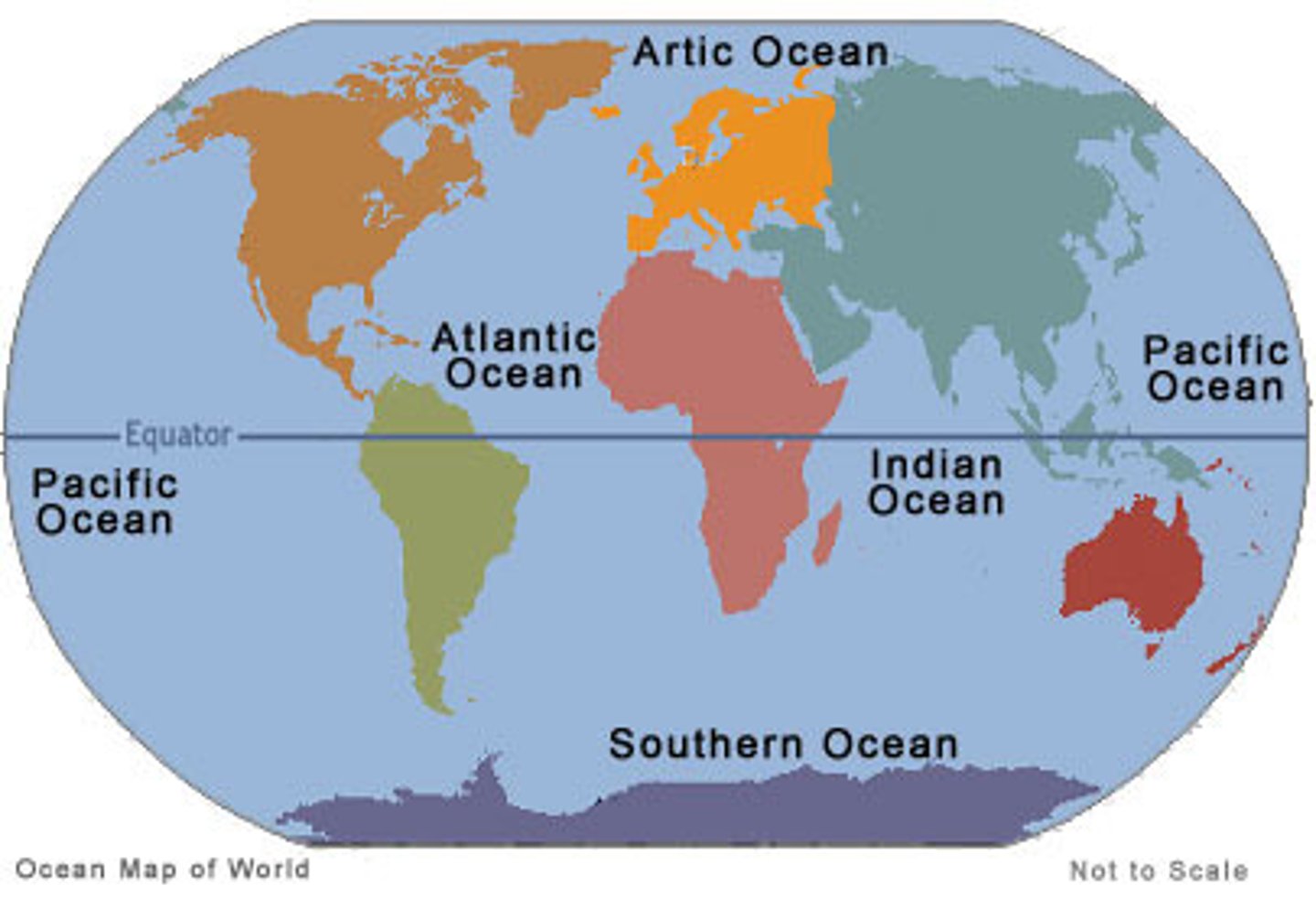
low income country
gross national income under 1k (afghan)
middle income country
gross national income btwn 1000-13000 (egypt)
high income country
gross national income above 13000 (US)
sustainability
ability to meet needs of present w/o compromising ability of future generations to meet their own needs
condensation
gas -> liquid
precipitation
any form of water from clouds
interception
water can't reach surface bc trees/grass
infiltration
water on ground surface enters soil
surface run-off
water stays on soil SURFACE, RUNS OFF to source
through flow
water FLOWS THROUGH the soil
groundwater flow
water flows beneath ground
transpiration
water evaporates from plant leaves
earth's major atmosphere gases
WTR: "NOCAWT"
nitrogen,
oxygen,
carbon,
argon
water vapor
trace gases
atmosphere layers
(farthest -> closest)
WTR: TMST mnemonic - the mess started there
thermosphere
mesosphere
stratosphere
troposphere
ozone layer
in the stratosphere, absorbs portion of sun's UV rays preventing skin cancer and cataracts.
natural greenhouse effect
- UV rays goes thru atmosphere & get absorbed by earth's surface
- some of that energy goes back into the atmosphere as IR rays
- greenhouse gases absorb the IR rays & prevent it from leaving the atmosphere.
biome
broad area of similar ecosystems, soils, and climates spread out around world based on latitude
ecosystem
place where organisms meet needs (food, shelter, water)
habitat
natural enviroment where organism lives
population
# of individuals of same species/area/time
community
grps of diff organisms living @ same place/time
niche
organism role in ecosystem
biotic factors of an ecosystem
- producers
- consumers (1st, 2nd, 3rd)
- decomposers
abiotic examples
- temperature
- humidity
- water
- oxygen
- salinity
- light
- pH
biotic interactions
- competition (interspecific & intraspecific)
- grazing
- predation
grazing
wild herbivores eat grass
WTR: graz = grass
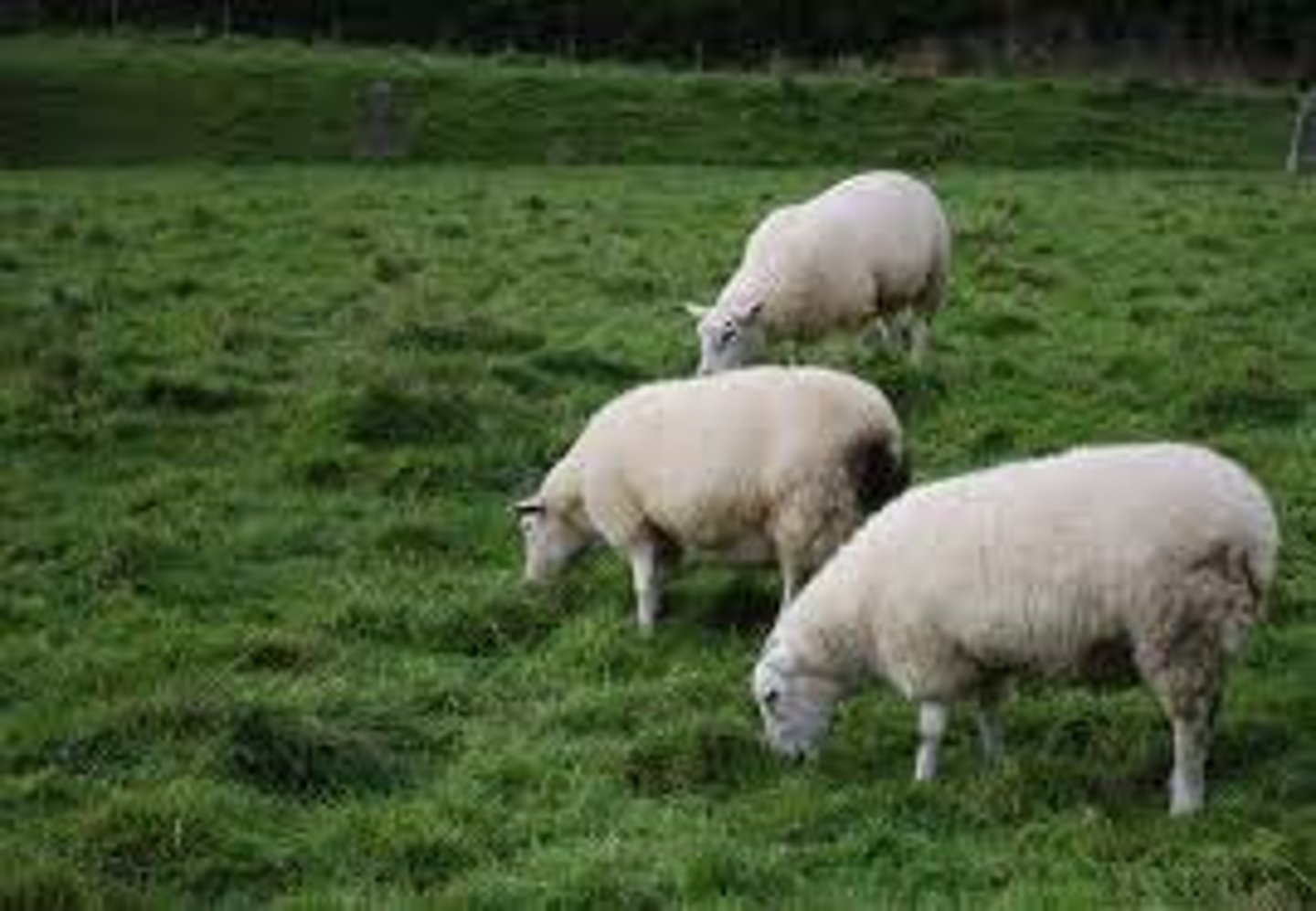
biotic factors affecting organism size/diversity
- disease
- predation
- parasitism
- competition
photosynthesis word process
plants synthesis glucose using carbon dioxide, water and energy from sunlight
in land/oceans, it's a vital part of the carbon cycle & has important effect on CO2 concentrations in the atmosphere by forming carbon stores.
photosynthesis word/chemical equations
6CO2 + 6H2O →light→ C6H12O6 + 6O2
carbon dioxide + water →light→ glucose + oxygen
photosynthesis rate limiting factors
- water/light availability
- CO2 concentration
trophic levels
feeding levels within food chains
food chain
energy transferred btwn organisms, starting w/ producer
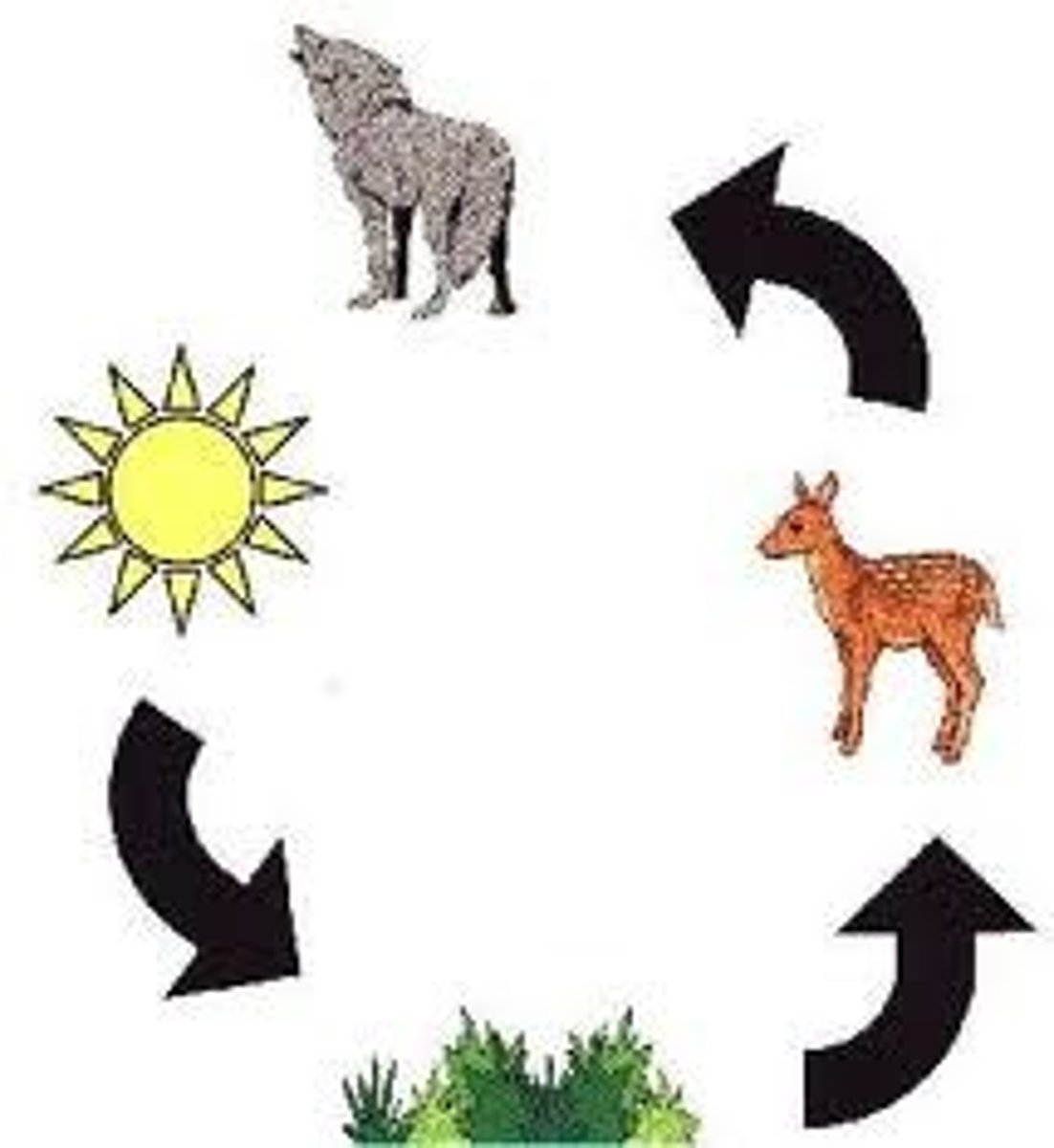
how much energy is lost in food chains?
90%
aerobic respiration chemical/word equation
C6H12O6 + 6O2 → 6CO2 + 6H2O
glucose + oxygen → carbon dioxide + water
aerobic respiration
chemical reactions in cells breaking down glucose molecules & releasing energy, CO2, and water
factors influencing whether to use random/systematic strategy
- size
- ease of access
- environment knowledge
frame quadrat (pros & cons)
square frame divided into small grid. species type & number in each grid is recorded.
- easy to collect sample
- easy to estimate size
- can be time-consuming
- may not be evenly spaced
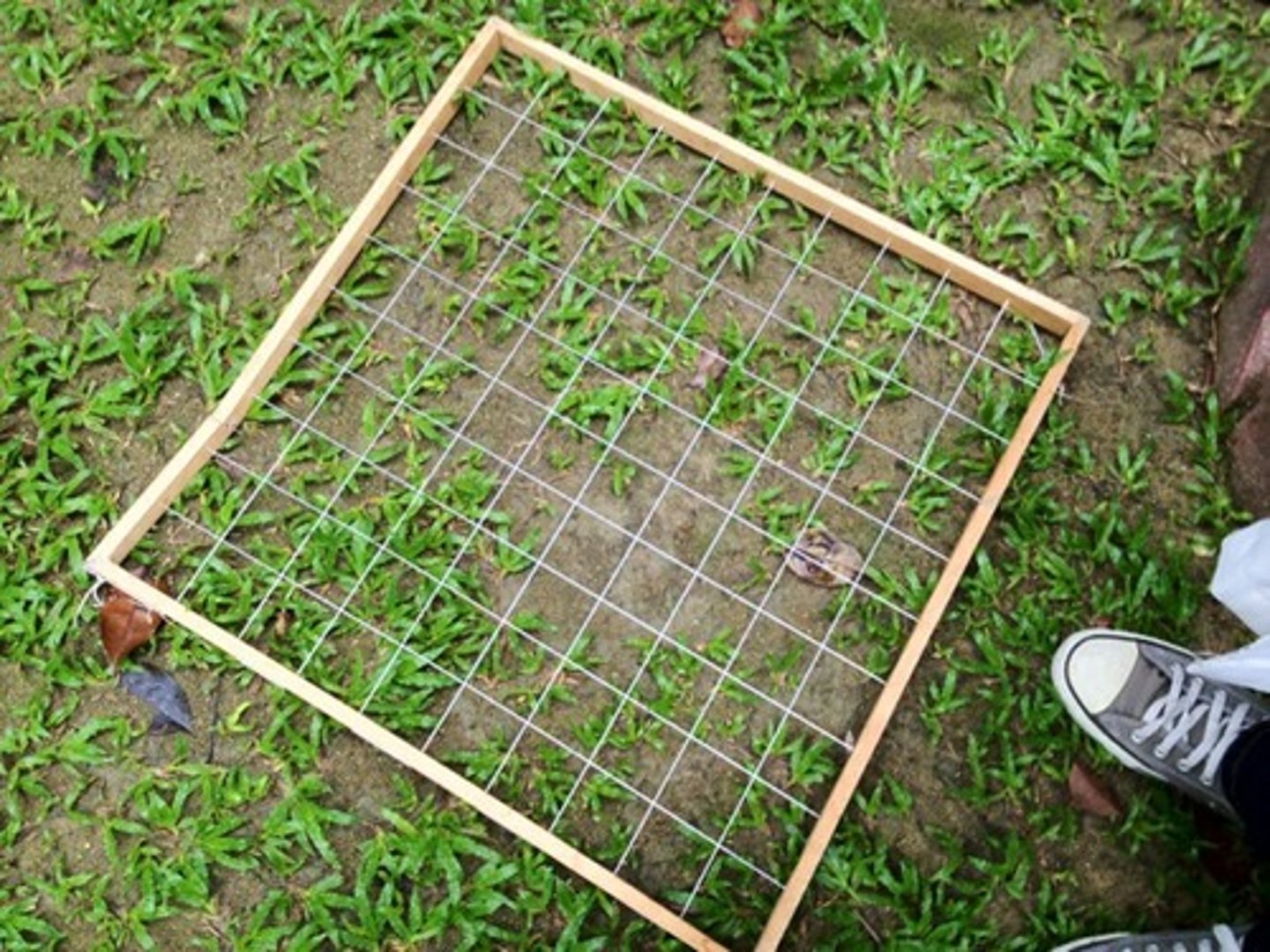
point quadrat (pros & cons)
frame w/ horizontal bar & set intervals for points in ground. each plant touching point is recorded.
- accurate bc u can see the plant touching point
- easy to collect data
- can damage plant
- time consuming
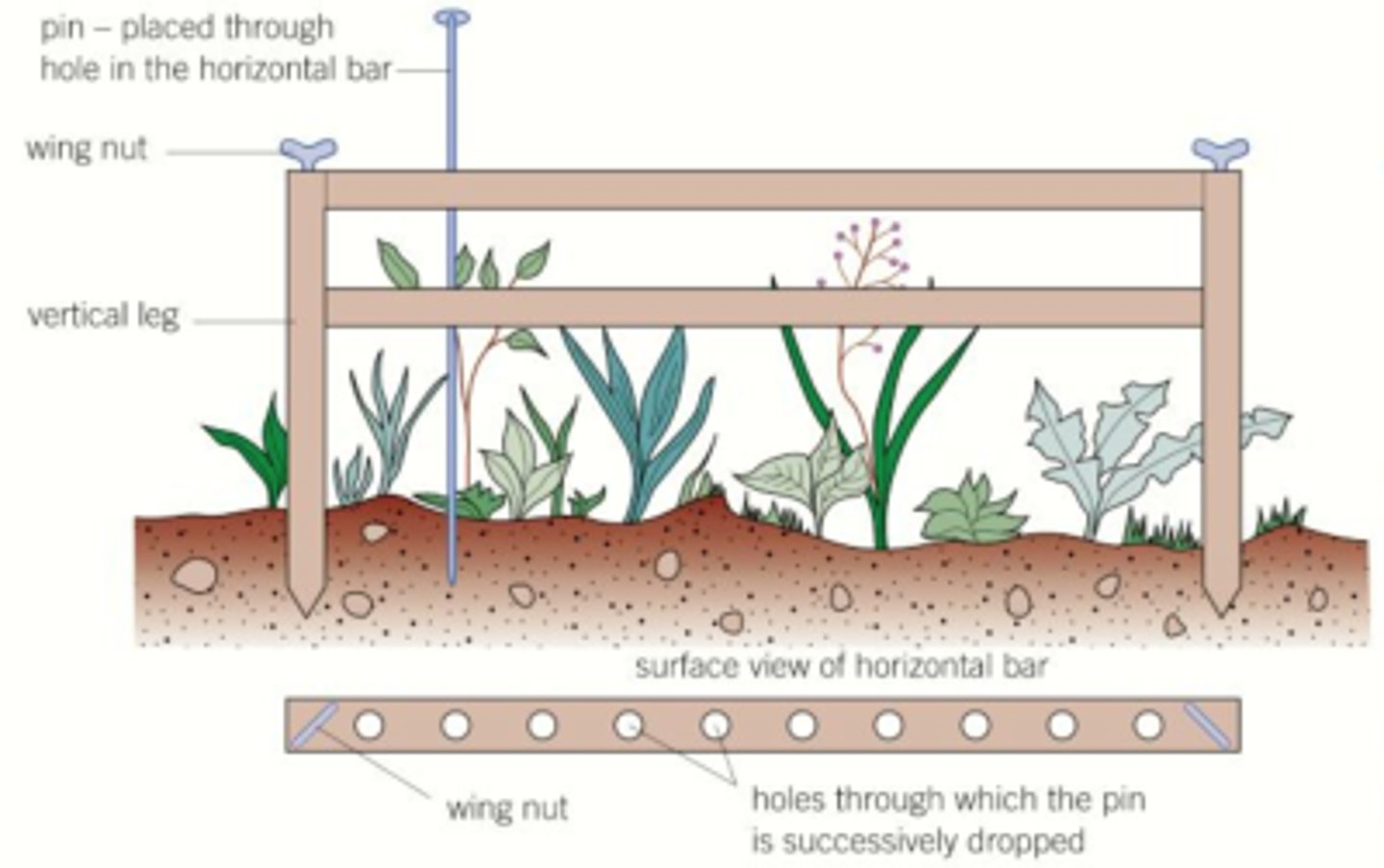
pitfall traps (pros & cons)
dig hole ground lvl, put antifreeze cup & funnel before covering w/ tarp
- estimate of insect population
- insects wont escape antifreeze
- predators can eat insects
- hard to identify insects
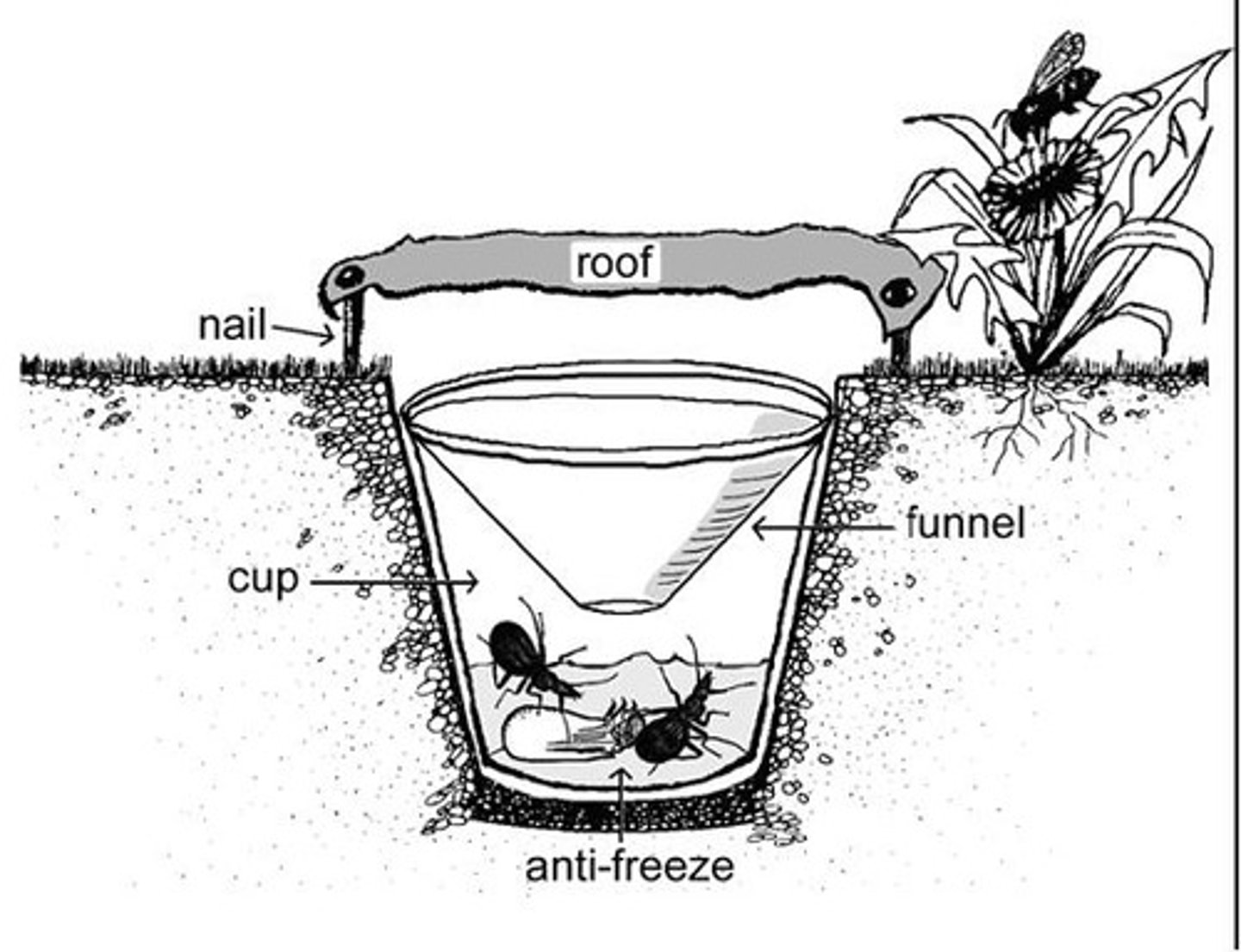
sweep nets (pros & cons)
catch insects in areas of long grass
- time consuming
- can damage plants
- easy to do
- cheap
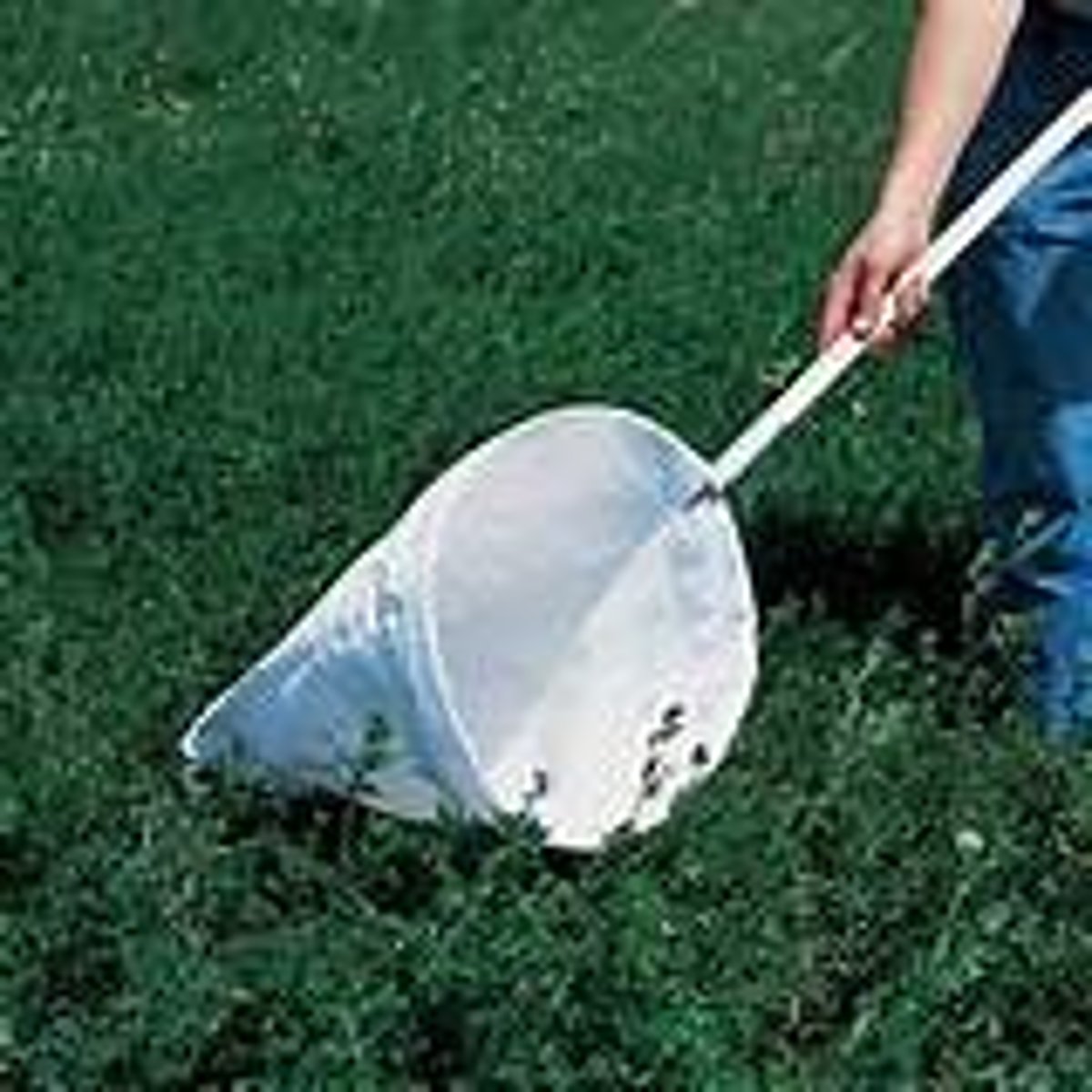
beating trays (pros & cons)
lightly hit branch and collect falling insect w/ tray
- cheap
- easy to do
- can damage plant
- time consuming
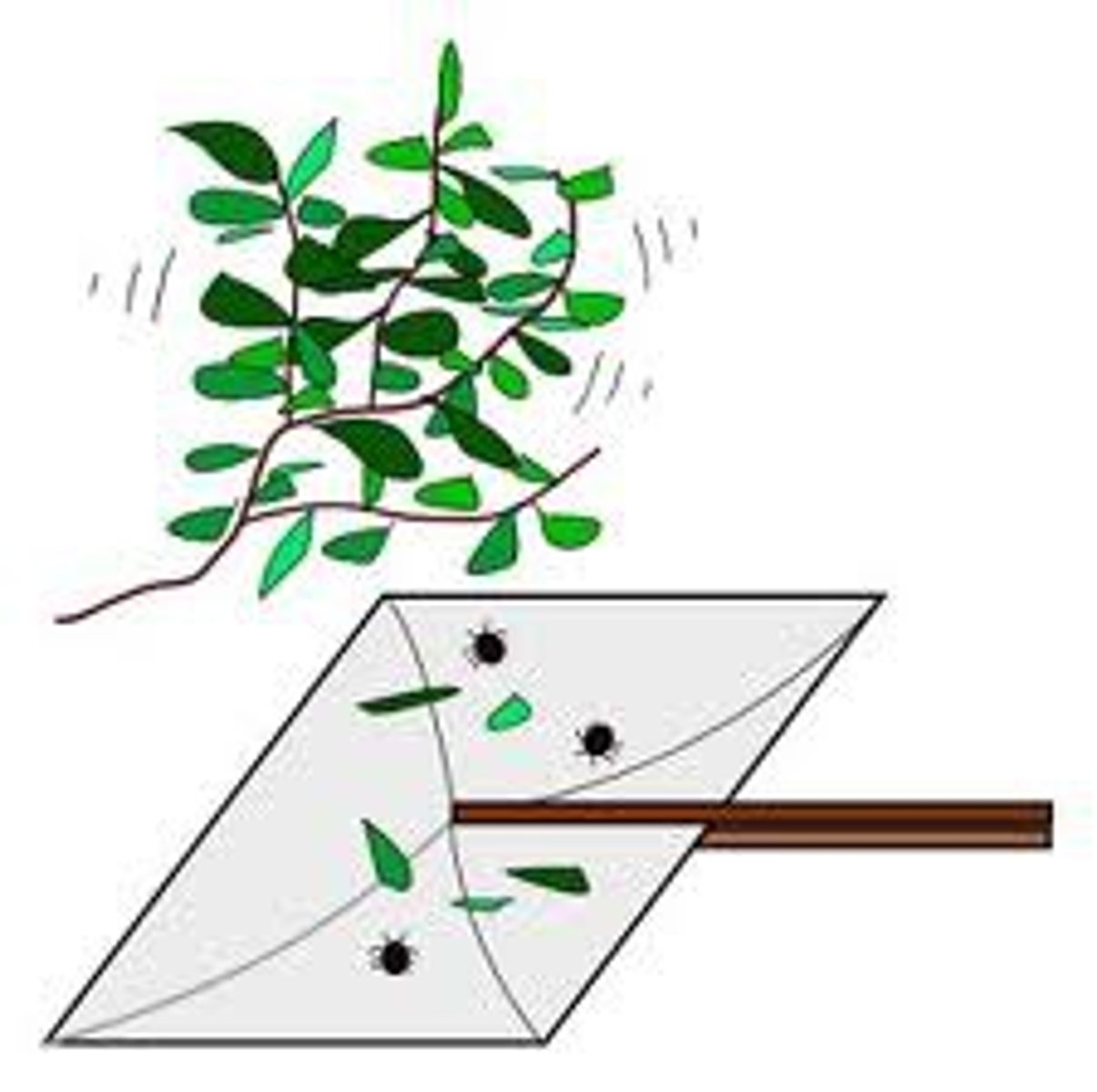
kick sampling (pros & cons)
kick water, hold net opposite flow & catch any organisms flying out.
- easy to get large sample
- good for deep waters
- species can be stuck to rocks
- small species can be missed
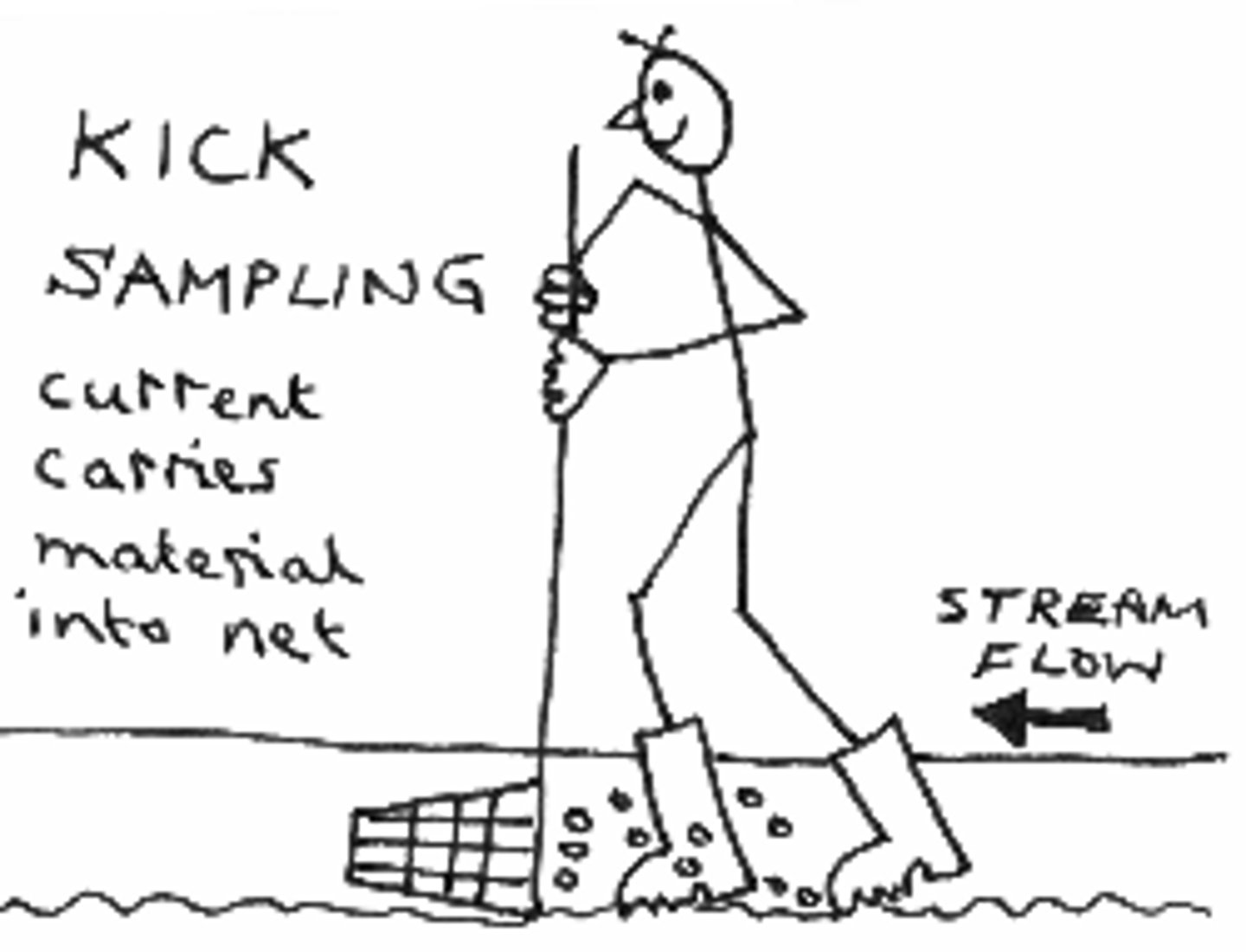
light traps (pros & cons)
get flying-organisms attracted to light like moths
- gets certain species
- easy to do
- some insects attract light @ long range, not short
- temp/humidity can limit species caught
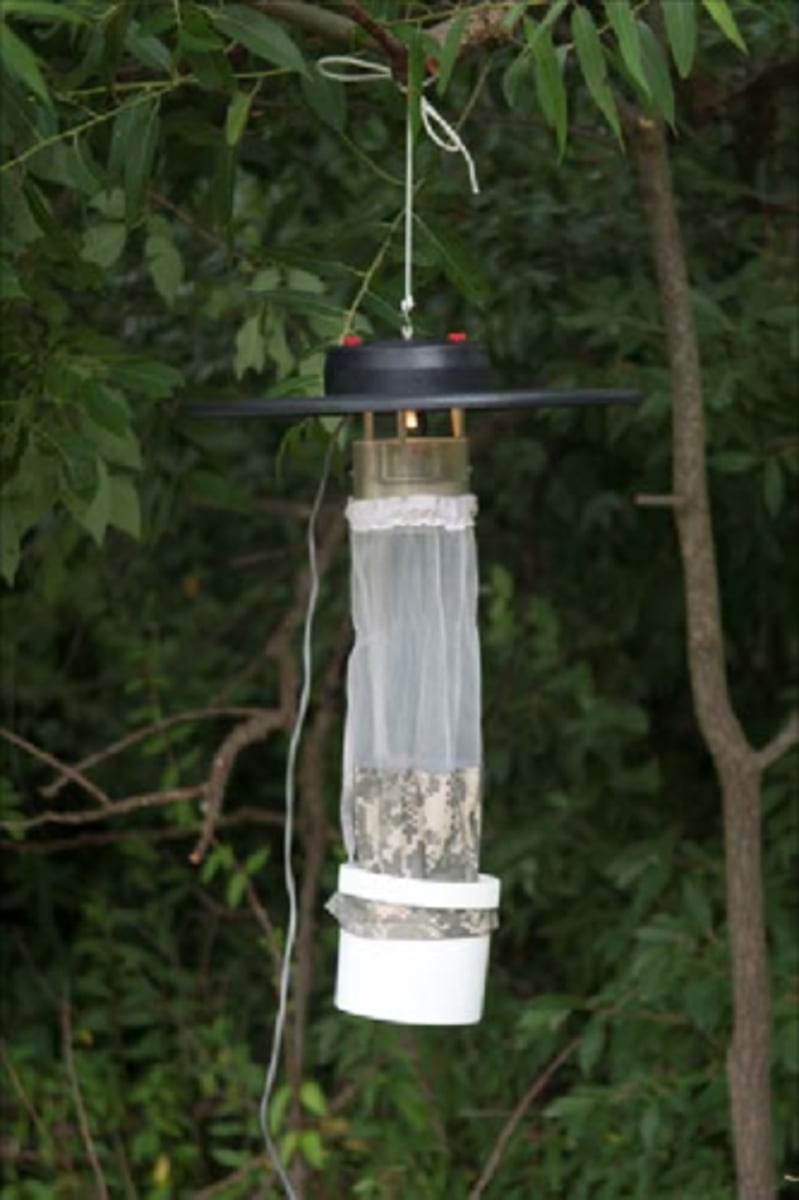
capture-mark-recapture (benefits + lims)
collect sample, mark w paint, release. after some time, collect more & see how many marked.
- shows population growth
- estimate large populations
- increases predation
- paint can kill

secchi disc (pros & cons)
circular disk to measure turbidity. lower into water until invisible, & depth = turbidity.
- easy to do
- cheap
- measured w/ eyes, vulnerable to research bias
- can be time consuming
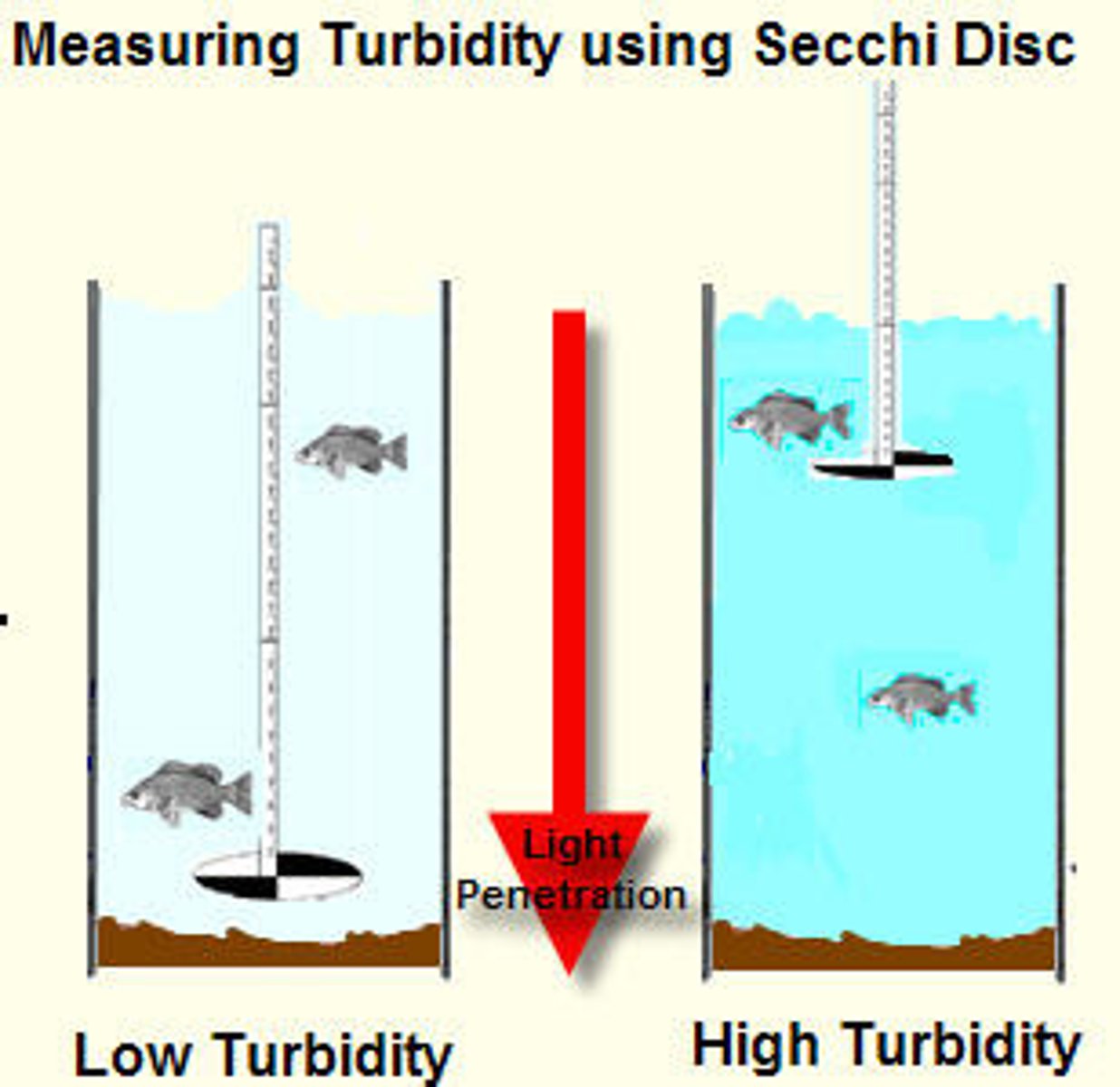
ACFOR abundance scale
abundant: 80-99%
common: 60-79%
frequent: 40-59%
occasional: 20-39%
rare: 0-19%
frequency
# of times plant shows up in # of quadrants as %
data collections w/ technology
- geospatial systems
- satellite sensors
- radio trackin
- computer modelling
- crowd sourcing
big data
data so huge that traditional data processing apps can't work
benefits & lims of big data analysis
- amt/type of data stored
- speed which new data generates
- data's trustworthiness
- ways data can be used